
2022 TVS Ronin First Ride Review | Why And How Did The Zeppelin...
- Jul 9, 2022
- Views : 9693


Monsoons are here and it’s a great time to head out for long rides. But before you start planning for one, or even if you just commute on your bike in the rains, here are a few tips that will help you be safe, and also keep your bike working well for longer.
If it has been a while since you last serviced your bike, it might be prudent to send it in for a full service. This will ensure that everything on your bike is working well, and won’t break down and leave you stranded in the rains. Also, get all your gaskets, o-rings, and other rubber bushings checked, especially those that form a seal of any sort, which will prevent water from seeping into places it shouldn’t. Most such rubber parts cost peanuts but are quite important.
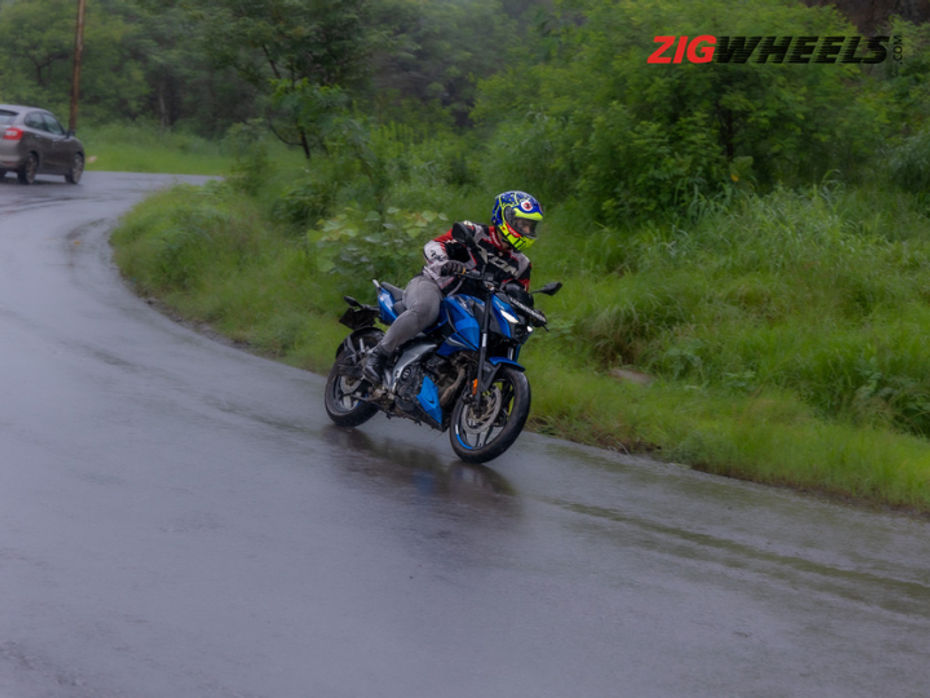
This has to be one of the most underrated tips ever. Most people won’t wash their bikes during the monsoon season with the thought that it will get dirty the next ride out in the rain. Yes sure, it will, but getting your bike washed (ideally weekly from a reputable washing centre) will ensure there’s no build-up of muck, grime, and mud on parts of your bike. While all of this might not sound harmless, it’s a quick way to get your parts rusting, corroding, or heating up. A proper wash will also ensure that there are no microparticles stuck in parts that rub against each other, which would otherwise cause early wear in them.
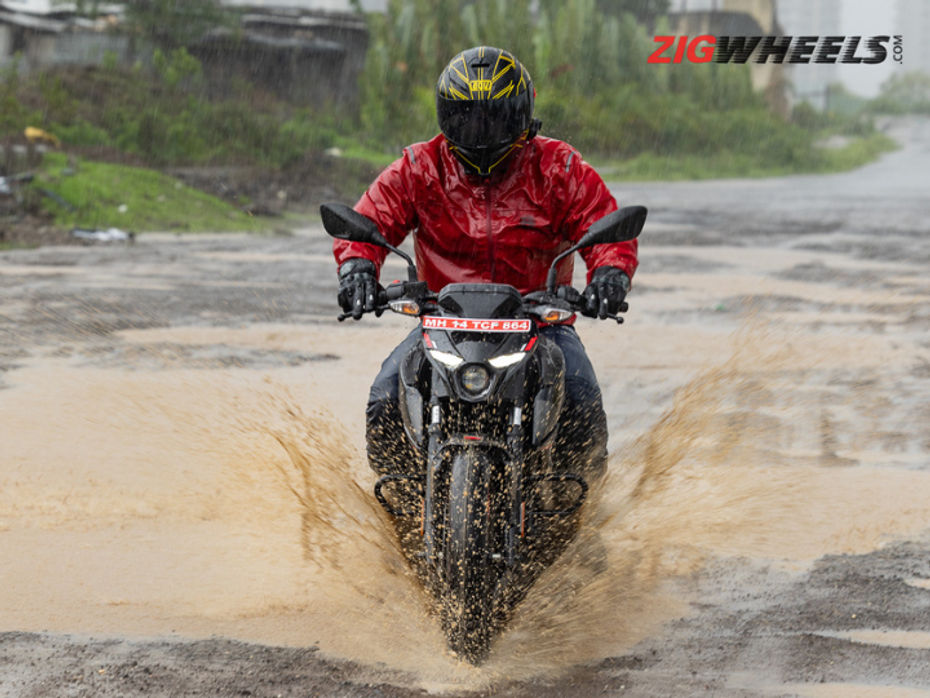
This is especially important if your bike has an uncovered chain, which is most likely in all the bikes except most commuters. Chains are at the biggest threat in the monsoons. Microscopic grime, as discussed earlier, can get lodged between the chain links and its rubber rings, causing premature wear.
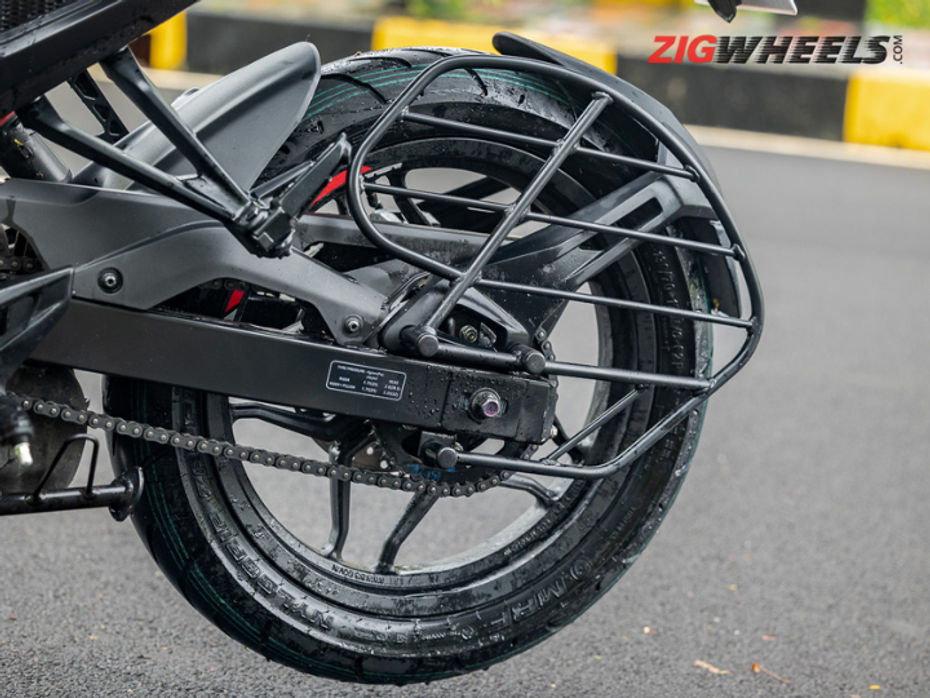
How often you should do it depends on how dirty your chain looks. If you ride where it rains a lot, or ride through mucky areas, your chain will thank you if you clean it thoroughly and lube it weekly. Remember to use a good chain-cleaning brush, cleaner, and lube.
Rain water can seep into your switchgear and cause corrosion or malfunction. While it's designed to be not affected by some water, precaution will always go a long way. Wipe the switchgear after a wet ride with a soft, dry cloth, so that there’s no water accumulation on it. Use a water repellent spray, like WD40, to disperse water from inside the switchgear, and then spray some electrical contact cleaner. Make sure you spray these on the inside and not on the buttons since that would be useless. You want to keep the electrical contact points dry and working well.
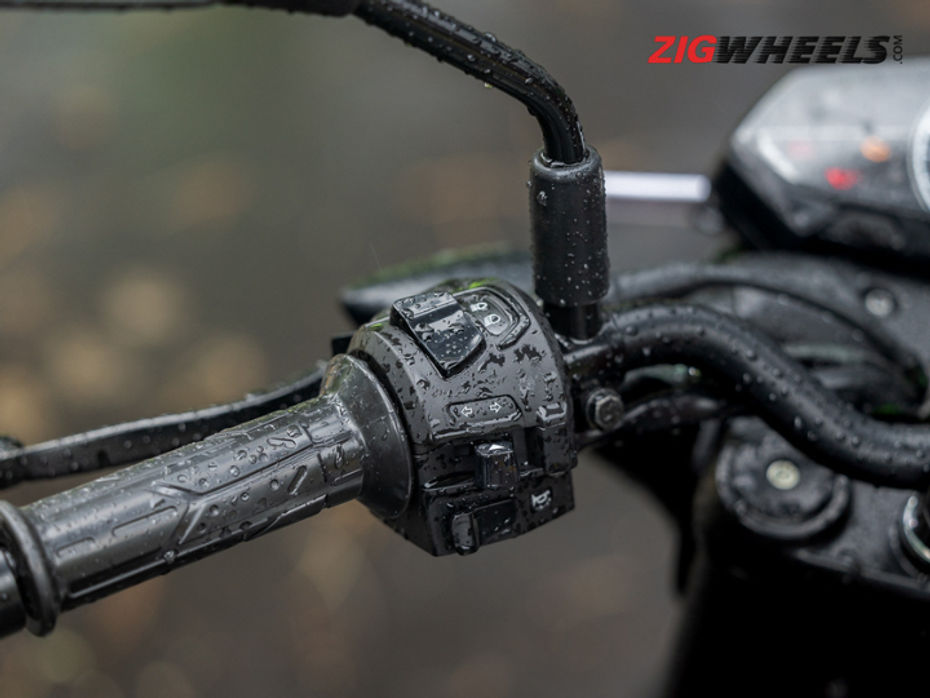
While at it, also spray some water repellent on your key cylinders – ignition, fuel tank cover, and pillion seat locks – so that they don’t get stuck.
Since your stopping distance on a wet surface is almost doubled, as compared to a dry surface, your brake pads, and tyres need to be in top shape. With disc brakes, it is easy to check the pad life. Replace if necessary. You also need to check the quality of your brake fluid. It’s hygroscopic, meaning it will absorb moisture from the atmosphere, and lose its braking efficiency. The biggest indicator of a brake fluid gone bad is a very spongy brake lever. If yours is, get your brake fluid changed ASAP or it will only get worse from there. Brake fluid isn’t as expensive but it's a laborious job, which means you might pay more in labour costs than the fluid itself. Though, it is something you can do yourself too. Check out brake bleeding DIY tips from reputable sources on the internet. If you want to do it yourself, remember to use rubber gloves, and that brake fluid is highly corrosive, which means even a small spill will have them rusting soon. Keep a bunch of old rags wrapped around your master cylinders at all times during the bleeding procedure.
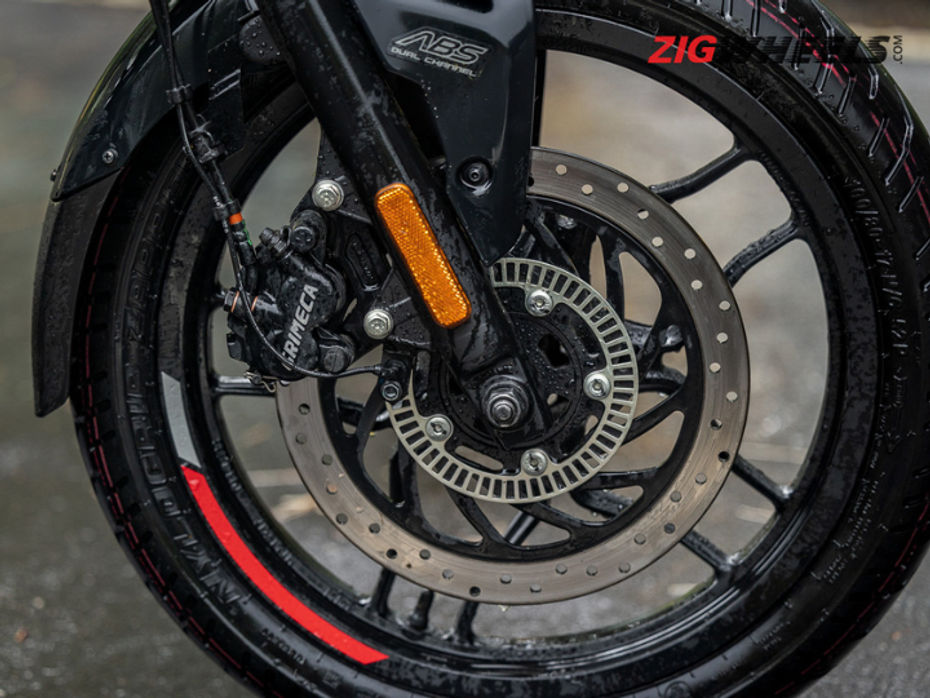
With drum brakes, check the adjustment nut on the drum. If it's all the way in, the pads are most likely worn.
Rain water streams on the road can bring out debris that can puncture your tyres. Regularly check your tyres for a visible puncture and check tyre pressures often. You do not need different tyre pressures in the monsoon. Stick to the pressures mentioned by your manufacturer. Over- or under-inflation puts you at a higher risk.
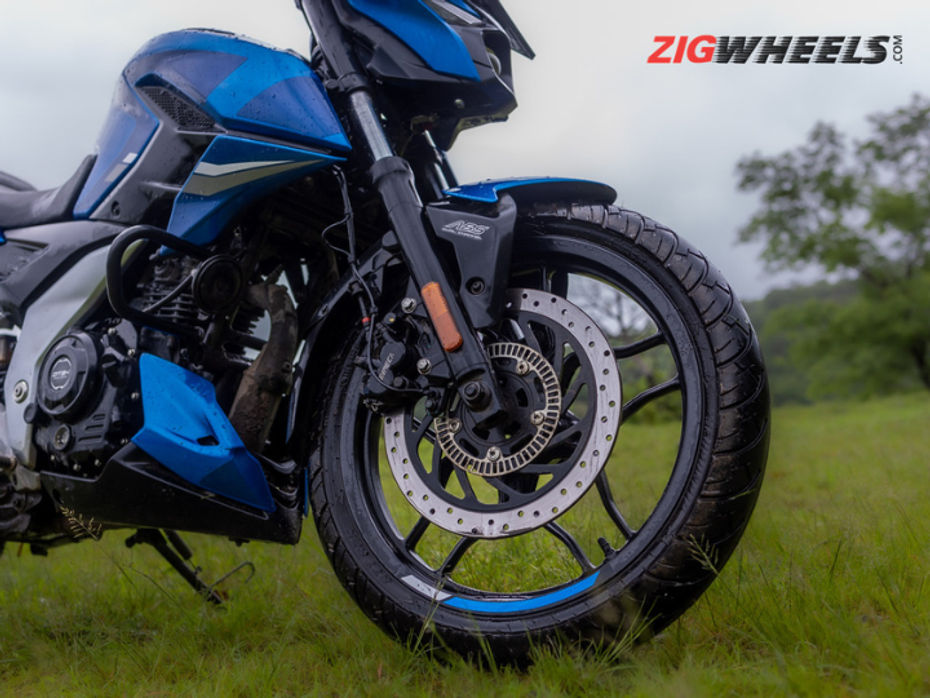
Also check your tyre health. It shouldn’t be cracked, and there should be ample tread depth. Check the tyre wear indicator on your tyres. If your tyres are worn a lot, or cracked, replace them soon enough. Cracked rubber means the tyre has hardened, and a worn tyre won’t have enough tread depth to disperse water between the tyre and the road, causing aquaplaning. Which is essentially your tyres not displacing all the water between them and the road. And that can be quite dangerous.
Before every ride, take 5 minutes to check if all your lights – headlight, tail light, and indicators – are working. These become extremely crucial when the visibility goes down. Your lights will help you be visible and also help you ride safely. Replacing non-working bulbs is easy, quick, and cheap.
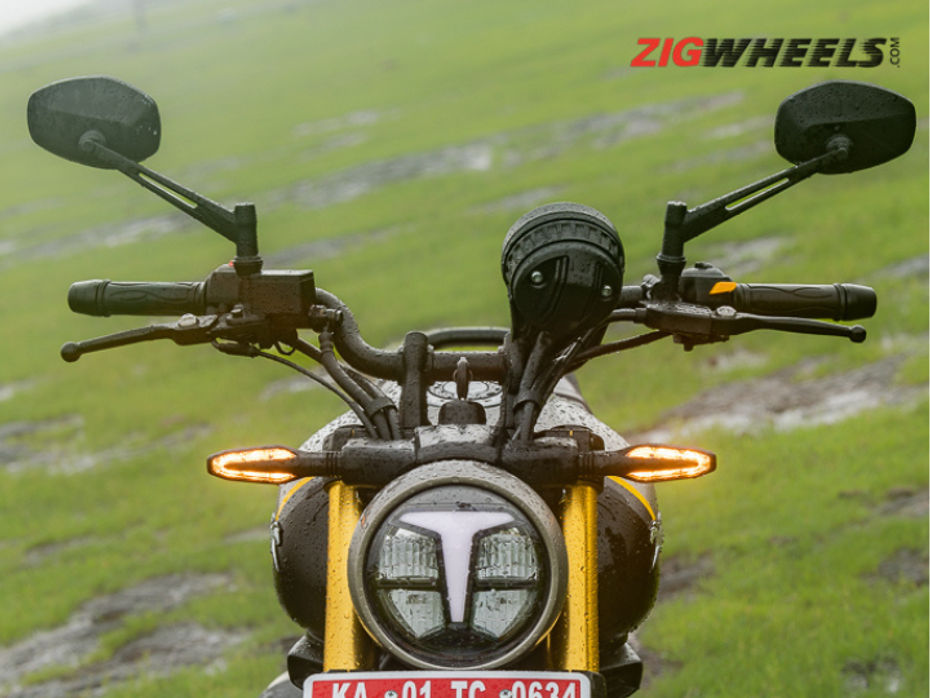
For the love of motorcycling, don’t use hazard lights while riding. Your headlight and tail light is much brighter than your indicators and will make you visible to other motorists in the heaviest of rains. Only use hazards if you are stopped on the road because of a breakdown.
If your headlight or tail-light units have persistent condensation inside them, there’s moisture seeping in from somewhere. Get it checked and rectified. If your bike is in warranty, you could also get the entire unit replaced if the issue is serious.
Your mirrors will help you keep a check on what’s coming from behind in heavy rains. Unclean mirrors will only make your ride miserable.
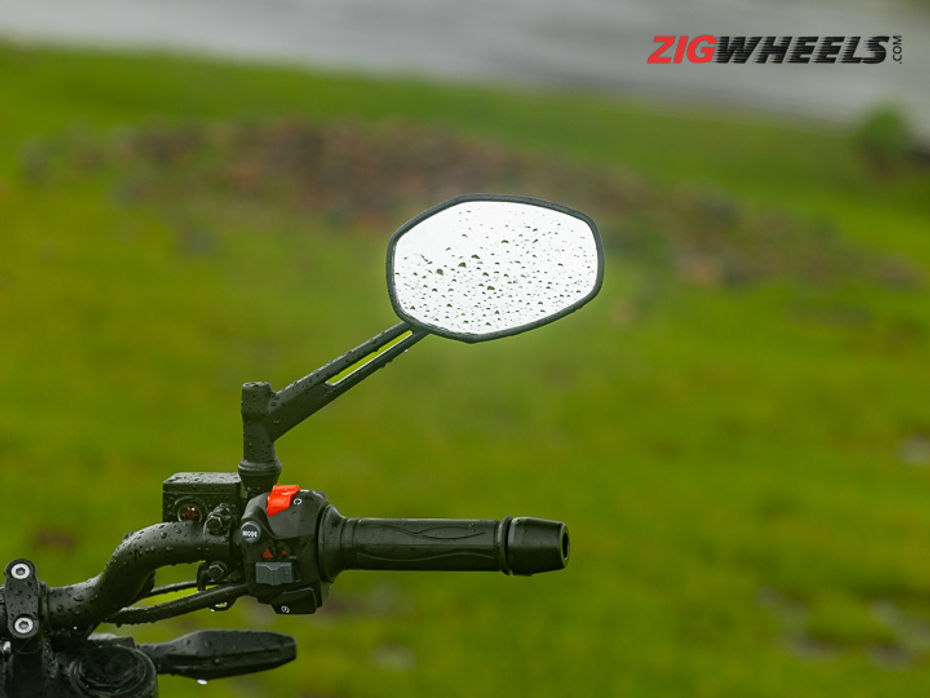
Also make sure you tighten all the nuts and screws so that your mirrors don’t go limp when you need them upright.
I am of course talking about your bike’s footpegs. If you have rubber ones, check if they aren’t cracked and hard. Metal pegs usually have a soft serration which can get dull over time. Replace the footpegs if necessary. Having proper footpegs will ensure that your feet can properly grip onto the footpegs and avoid them from slipping.
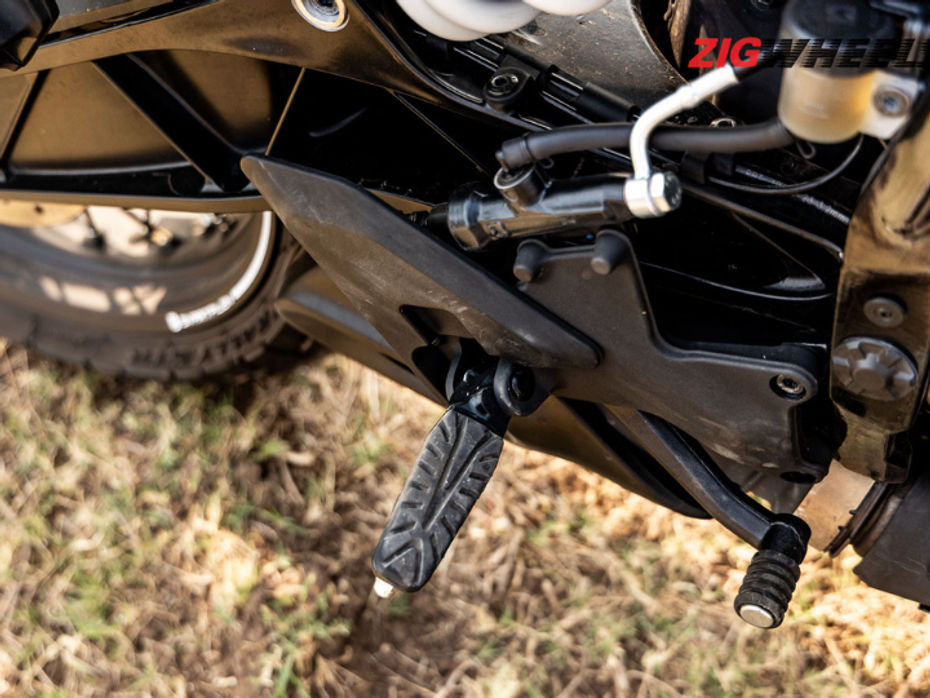
Here’s a top tip: a few bikes use the same footpegs on both sides and for rider and pillion. You might be able to swap with pillion pegs if you don’t carry a pillion often.
These are simple things to look after on your bike, especially in the monsoon, and if you pay attention, you’ll be safe, and your bike will thank you. Remember to ride safely when it rains, and take it easy at all times.
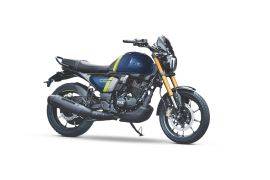

2022 TVS Ronin First Ride Review | Why And How Did The Zeppelin...

Modified TVS Ronins At Auto Expo 2025: From a Cafe Race To A Flat...

2025 TVS Ronin DS Variant Unveiled at TVS MotoSoul 2024

TVS Ronin Drift R School Launched: Now You Can Learn Flat Tracking On...

TVS Ronin Colours Explained: Which One Is For You?

TVS Ronin Midnight Blue Colour Option Launched; Base Variant Price...

TVS Ronin Parakram: Homage To Indian Armed Forces

Is This Design A Trademark For TVS Zeppelin Cruiser?

Check Out These Exquisite TVS Ronin Custom Bikes At Motosoul 2023
 TVS Raider
TVS Raider
 Royal Enfield Hunter 350
Royal Enfield Hunter 350
 Yamaha FZ-X
Yamaha FZ-X
 Honda CB350
Honda CB350
 TVS Apache RTR 160 4V
TVS Apache RTR 160 4V
India's largest automotive community
 TVS Apache RTR 160
Rs. 1.20 Lakh
TVS Apache RTR 160
Rs. 1.20 Lakh
 TVS Raider
Rs. 85,010
TVS Raider
Rs. 85,010
 TVS Apache RTR 160 4V
Rs. 1.24 Lakh
TVS Apache RTR 160 4V
Rs. 1.24 Lakh
 TVS Apache RTR 310
Rs. 2.49 Lakh
TVS Apache RTR 310
Rs. 2.49 Lakh
 TVS Apache RR 310
Rs. 2.75 Lakh
TVS Apache RR 310
Rs. 2.75 Lakh
 TVS NTORQ 125
Rs. 86,841
TVS NTORQ 125
Rs. 86,841
 TVS Jupiter
Rs. 74,691
TVS Jupiter
Rs. 74,691
 TVS Jupiter 125
Rs. 79,299
TVS Jupiter 125
Rs. 79,299
 TVS iQube
Rs. 1.07 Lakh
TVS iQube
Rs. 1.07 Lakh
 TVS XL100
Rs. 44,999
TVS XL100
Rs. 44,999